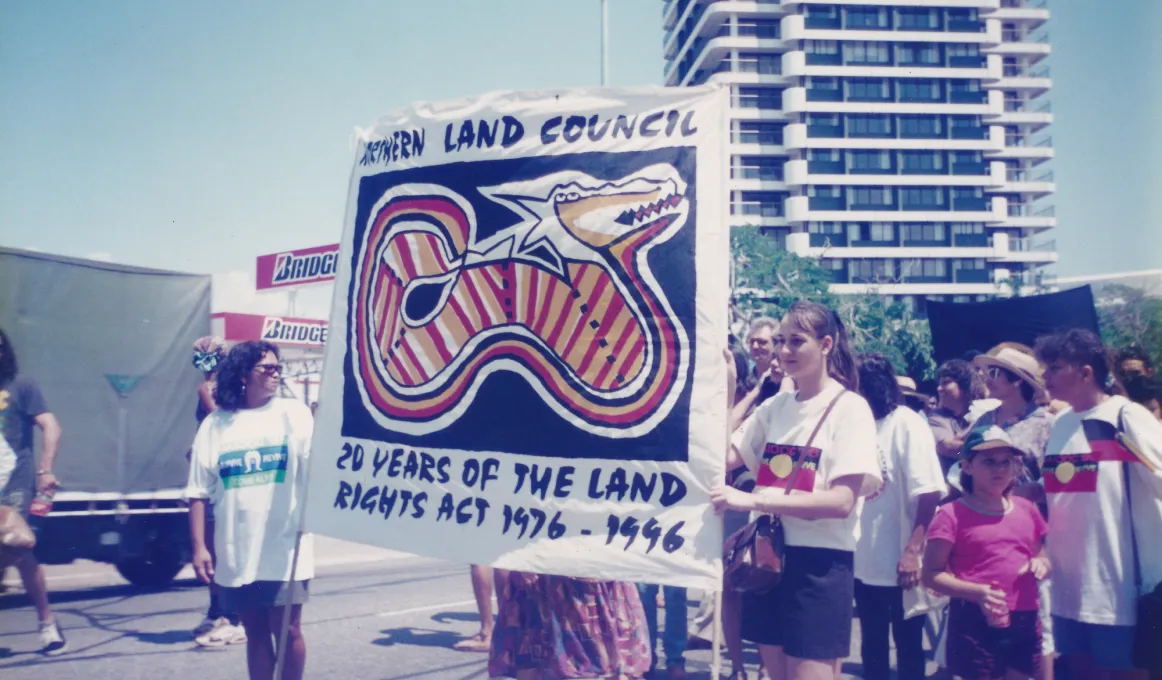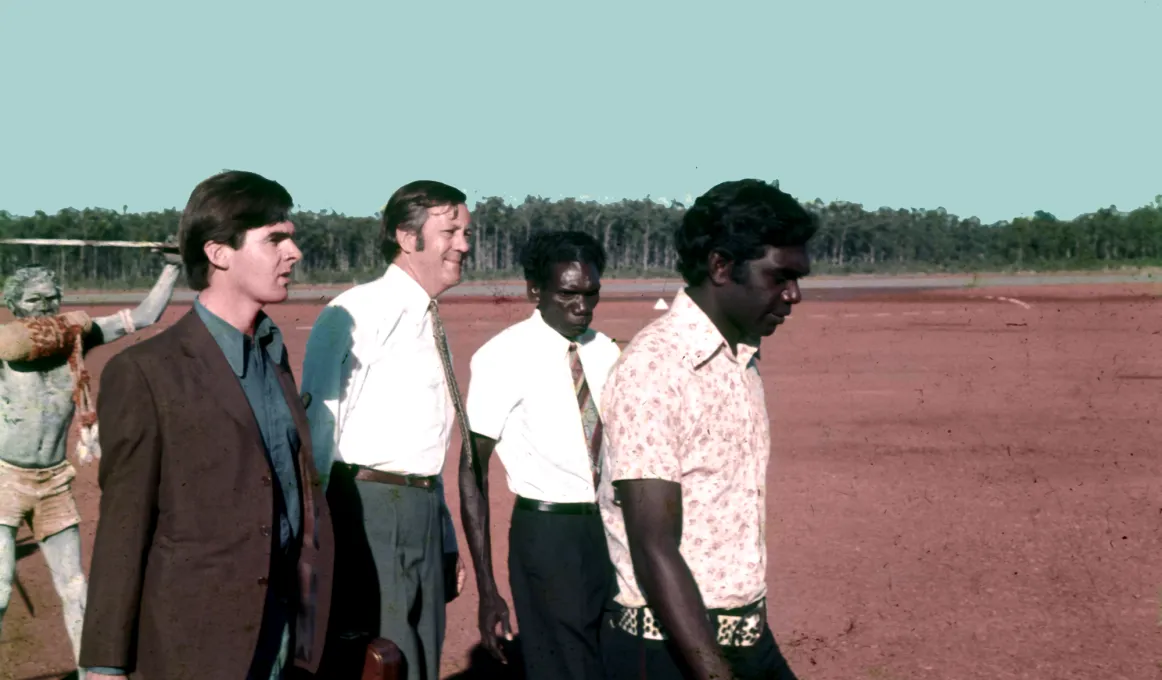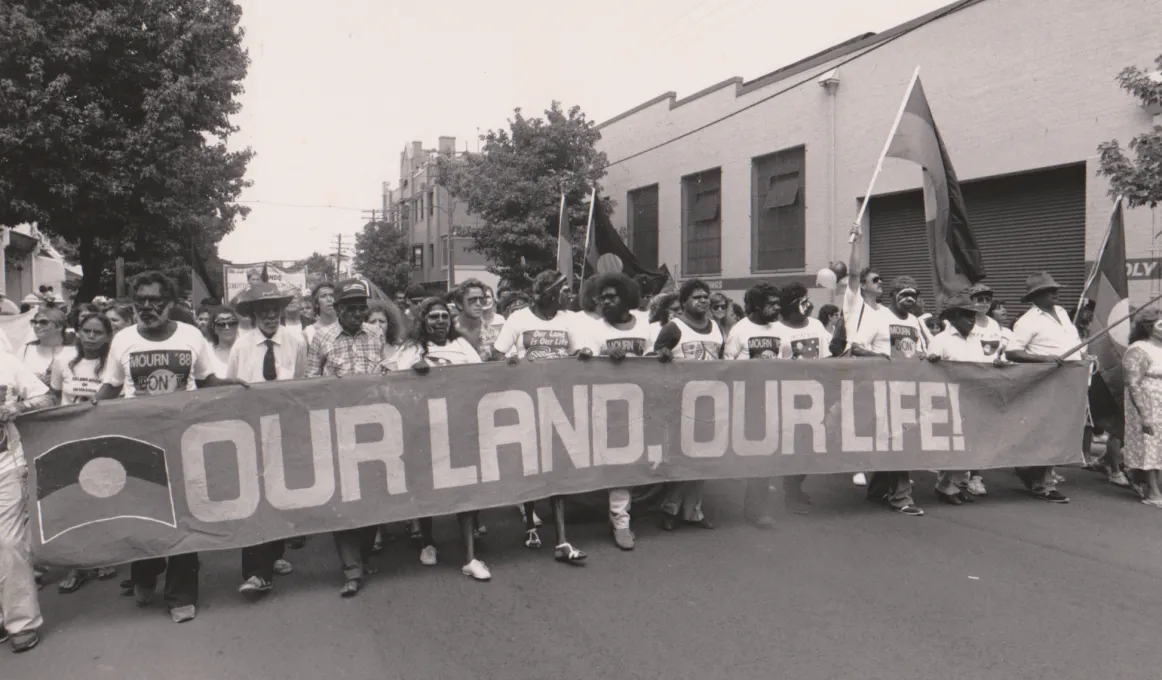Northern Land Council: celebrating 50 years of resilience and progress




The Northern Land Council (NLC), which will mark its 50th anniversary this week, has played a pivotal role in representing and advocating for the rights and interests of First Nations people in the Top End of the Northern Territory.
The Northern Land Council (NLC) has an incredible history of advocacy and empowerment for First Nations people in Australia's Northern Territory.
Established in 1977, the NLC has been a pivotal force in protecting the rights and lands of Top End communities, with impact on the Land Rights movement for the whole of Australia.
Through its diligent work, the NLC has negotiated land rights agreements, facilitated economic development initiatives, and preserved cultural heritage for generations to come.
Its unwavering commitment to self-determination and indigenous sovereignty has had a profound impact, leading to the return of vast tracts of ancestral land to First Nations ownership and fostering economic opportunities while preserving the rich cultural heritage of the region.
The NLC stands as a beacon of self-empowerment and progress for First Nations people, illustrating the power of collective action and resilience in the face of historical injustices.
Timeline - NLC and Land Rights
1963 – The Bark Petitions: Yolŋu from northeast Arnhem Land present the Commonwealth government with a petition of bark paintings protesting a bauxite mine lease granted on their land. A Parliamentary Committee of Inquiry follows. It acknowledges the rights of the Yolngu and recommends the payment of compensation for loss of livelihood, the protection of sacred sites and the ongoing monitoring of the mining project by a parliamentary committee.
1966 – Wave Hill Walk-Off: Aboriginal stock-workers strike over wages, working conditions and land rights, including Gurindji, Ngarinman, Bilinara, Warlpiri and Mudbara workers, who walk off Wave Hill Station with their families.
1967 – Constitutional Change: Ninety-one percent of Australians vote in a referendum to give the Commonwealth power to make laws with respect to Aboriginal people and count them in the census.
1971 – The Gove Land Rights Case: Justice Blackburn accepts evidence in Milurrpum v Nabalco that Yolŋu have been living on their lands for tens of thousands of years and their law is based on intricate relations to the land. He further determines this does not translate as property rights, and mining proceeds.
1972 - Larrakia people and supporters create a petition, ‘Gwala Daraniki’, calling on the Federal Government to ‘work out a treaty to suit each tribe’ in the country.
1972 – Tent Embassy: Aboriginal peoples set up a tent embassy on the lawns of Parliament House in Canberra to protest the lack of land rights and other issues.
1973 – Woodward Royal Commission: The Federal Government appoints Justice Sir Edward Woodward to conduct a Commission of Inquiry into the appropriate way to recognise Aboriginal land rights in the Northern Territory. The Commission’s first report recommends the establishment of land councils in the Central and Northern regions of the NT to represent the views of Aboriginal people.
1973 – First NLC meeting: Twenty six representatives from across the Top End of the NT meet in Darwin in September, and following 32 community consultations over the next four months, they develop a detailed submission to the Woodward Inquiry.
1974 – The Northern Land Council commences official operations.
1975 – Gurindji hand back: Prime Minister Gough Whitlam returns land, purchased from Wave Hill station through the Aboriginal Land Fund, to traditional owners almost a decade after they walked off Wave Hill Station.
1976 – Land Rights: Aboriginal Land Rights (Northern Territory) Act (ALRA) passed by Parliament of Australia with bipartisan support.
1977 – ALRA comes into effect. Most Aboriginal reserves become Aboriginal land with freehold title held by local Aboriginal people.
1988 – Barunga Statement: NLC Chair Yunupingu and Central Land Council Chair Wenten Rubuntja present Prime Minister Bob Hawke with the Barunga Statement – a petition setting out the principles of self-determination and sovereignty, government recognition of Aboriginal prior ownership of Australia, and calling for a treaty.
1992 – Native Title decision: The High Court of Australia ruling in the Mabo v Queensland case grants native title rights and effectively overturns the 1971 Blackburn ruling in the Gove Land Rights case.
2001 – Croker Island sea rights: The High Court rules on Yarmirr v Northern Territory - a native title application led by the NLC’s Executive member Mary Yarmirr and Croker Island clans – recognising non-exclusive native title to the seas surrounding Croker Island. The decision is subject to appeals over the following years.
2008 – Blue Mud Bay decision: The High Court of Australia grants sea rights to approximately 85 percent of the NT coastline – land granted under the ALRA, heralding a new era in the fight for land and sea rights.
2018 – Learning on Country Program (LoC): NLC takes on the development and administration of this successful NIAA funded program. LoC is a joint initiative between Aboriginal ranger groups and remote community schools. Since its inception, the program’s footprint has grown from four to currently 17 sites across the Top End of the Northern Territory, providing an education pathway that integrates ‘both-ways learning’.
Timeline courtesy of the Northern Land Council.
Find out more
Learn more about the history of the Northern Land Council.